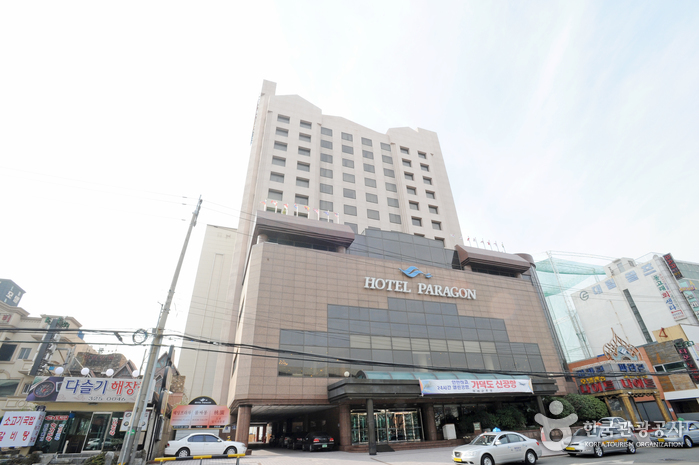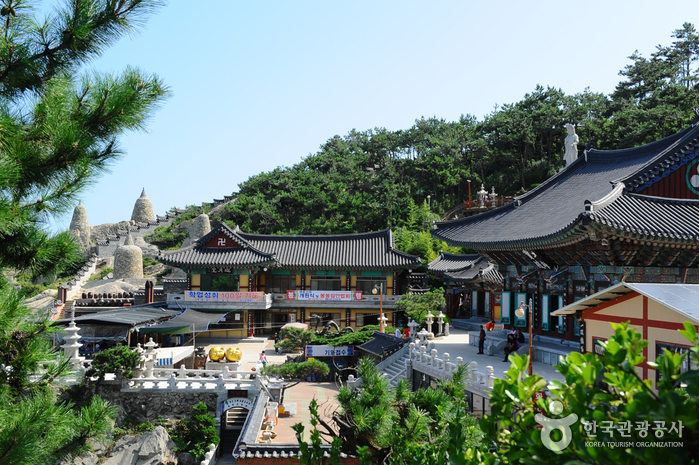Olive Young - Busan Sasang Branch [Tax Refund Shop] (올리브영 부산사상점)
12.1Km 2024-06-27
204, Sasang-ro, Sasang-gu, Busan
-
8 Seconds - Apple Outlet Sasang Branch [Tax Refund Shop] (에잇세컨즈 애플아울렛 사상점)
12.1Km 2024-04-18
201, Sasang-ro, Sasang-gu, Busan
-
Apple Outlet - Busan Branch [Tax Refund Shop] (애플아울렛 부산)
12.1Km 2024-04-22
Apple Outlet, 201, Sasang-ro, Sasang-gu, Busan
-
Olive Young - Apple Outlet Branch [Tax Refund Shop] (올리브영 부산애플아울렛)
12.1Km 2024-04-17
Apple Outlet Main Building, B1, 201, Sasang-ro, Sasang-gu, Busan
-
BUSINESS HOTEL RENAISSANCE [Korea Quality] / 르네상스호텔 [한국관광 품질인증]
12.1Km 2024-06-26
60 , Gwangjang-ro, Sasang-gu, Busan
+82-51-312-8580~1
The Renaissance Hotel is in the Sasang-gu district of West Busan - a major logistics and distribution centre - catering for both business customers and travellers. The hotel has themed guestrooms, and facilities include a restaurant, wedding hall and entertainment bar, as well as parking for up to 70 cars. Shopping and entertainment venues such as Homeplus, Renecite, E-Mart, and Lotte Cinema are nearby, as are the Yongwon and Gaya golf courses, Gimhae Airport and downtown Busan. Busan Seobu Bus Terminal and Sasang Station are within a 1-minute walk.
Adpar Golf - Saha Branch [Tax Refund Shop] (애드파골프 사하)
12.2Km 2024-04-23
378, Nakdong-daero, Saha-gu, Busan
-
ET Land - Saha Branch [Tax Refund Shop] (전자랜드 사하)
12.2Km 2024-04-22
375, Nakdong-daero, Saha-gu, Busan
-
Hotel Paragon (호텔 파라곤)
12.2Km 2019-08-12
46, Gwangjang-ro, Sasang-gu, Busan
+82-51-328-2001
Located in the center of western Busan, Hotel Paragon is close to Gimhae International Airport and the Busan subway, offering easy access to downtown Busan, as well as various economic and industrial venues such as the Free Economic Zone (FEZ), Busan New Port and Shinho Industrial Complex. In addition to the guestrooms, Hotel Paragon offers a wide variety of amenities including a special Korean restaurant that serves Korean barbecue, Western and Japanese restaurants, a lobby lounge, a banquet hall, a wedding hall and more. The hotel is the perfect venue for large business meetings, family events, and vacations.
Adpar Golf - Geumjeong Branch [Tax Refund Shop] (애드파골프 금정)
12.3Km 2024-04-18
1669, Jungang-daero, Geumjeong-gu, Busan
-
Haedong Yonggungsa Temple (해동 용궁사(부산))
12.3Km 2025-04-15
86 Yonggung-gil, Gijang-gun, Busan
Haedong Yonggungsa Temple is situated on the coast of the north-eastern portion of Busan. This superb attraction offers visitors the rare find of a temple along the shore line as most temples in Korea are located in the mountains. Haedong Yonggungsa Temple was first built in 1376 by the great Buddhist teacher known as Naong during the Goryeo dynasty.
The main sanctuary of the temple was reconstructed in 1970 with careful attention paid to the colors that were traditionally used in such structures. On the right-hand side, inside a cave, is a uniquely designed Buddhist sanctum, while situated just in front of the main sanctuary is a three-story pagoda with four lions. The four lions symbolize joy, anger, sadness, and happiness. Other special sites at the temple are the 108 stairs and stone lanterns lining the rocky landscape. After going down the 108 steps, one will be delighted with the beauty of the temple. Midway down the 108 steps one can stop and enjoy the calming sounds of the waves, and view the majestic sunrise.

![8 Seconds - Apple Outlet Sasang Branch [Tax Refund Shop] (에잇세컨즈 애플아울렛 사상점)](http://tong.visitkorea.or.kr/cms/resource/89/2885289_image2_1.jpg)
![Apple Outlet - Busan Branch [Tax Refund Shop] (애플아울렛 부산)](http://tong.visitkorea.or.kr/cms/resource/85/2885285_image2_1.jpg)
![Olive Young - Apple Outlet Branch [Tax Refund Shop] (올리브영 부산애플아울렛)](http://tong.visitkorea.or.kr/cms/resource/92/2888092_image2_1.jpg)
![BUSINESS HOTEL RENAISSANCE [Korea Quality] / 르네상스호텔 [한국관광 품질인증]](http://tong.visitkorea.or.kr/cms/resource/69/2555769_image2_1.jpg)
![Adpar Golf - Saha Branch [Tax Refund Shop] (애드파골프 사하)](http://tong.visitkorea.or.kr/cms/resource/17/2885917_image2_1.jpg)

![Adpar Golf - Geumjeong Branch [Tax Refund Shop] (애드파골프 금정)](http://tong.visitkorea.or.kr/cms/resource/59/2888459_image2_1.jpg)

 English
English
 한국어
한국어 日本語
日本語 中文(简体)
中文(简体) Deutsch
Deutsch Français
Français Español
Español Русский
Русский